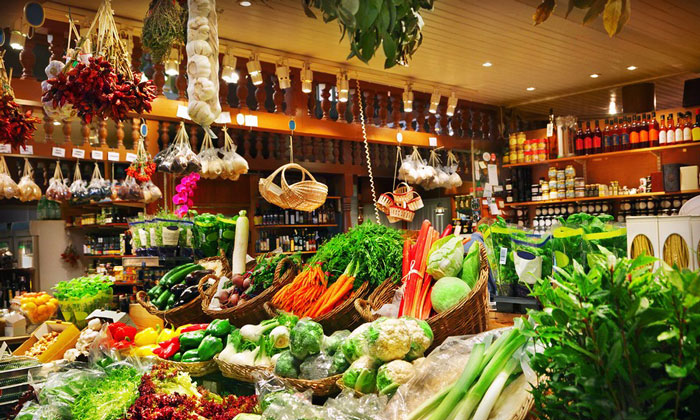Top food safety challenges of 2018 in Europe, the US and beyond
Posted: 16 February 2018 | Arundhati Kasbekar | Senior Manager - Regulatory Affairs | Freyr | No comments yet
Arundhati Kasbekar of global regulatory solution provider Freyr talks us through the main safety issues that the entire food industry is expected to face over the next 12 months.


EVOLVING: The challenges and risks faced by consumers and the food industry are changing
The safety of food supplies is a matter of global concern today. In today’s modern era, despite the latest technology, novel product forms, detection tools, safety certifications, regulations, compliance, monitoring, and consumer education on food safety, reports about outbreaks of foodborne illnesses have been on the rise. Safe food supplies support national economies, trade and tourism, contribute to food and nutrition security, and reinforce sustainable development.
Due to growing urbanisation, and altering consumer habits, there is an increase in the number of people preferring to buy and eat food prepared in public places. Another challenge faced by the world today is food wastage. Better food safety and quality standards can be used to reduce wastage, in ways that are still safe for human consumption from the food supply chain. On the other hand, at a consumer level, inadequate planning of food purchases and inability to use it before it expires, can also lead to avoidable food waste.
Europe (EU)
In EU, the food industry sector is one of the largest and most important manufacturing sectors. It is the second largest (after metal) in the manufacturing industry. More than 70 percent of the agricultural goods produced in the EU are later transformed into food industry products.
Over the past 20-to 30 years, food safety issues have become prominent across Europe and have led to the establishment of many “National Food Safety Agencies” in the 1990s, followed by European Food Safety Authority (EFSA) in 2002. The EFSA is the keystone of EU risk assessment regarding food and feed safety. It has resulted in a safer food supply and has greatly enhanced the science underlying food safety.
The EU Food policy and legislative framework enforces or proposes respective standards and requirements that not only ensure a high level of food quality but also position the EU in the competitive global market.
A series of evolving “challenges and risks” could put the currently successful European food system under severe stress. Some of these challenges include:
- Increasing concentration of the supply chain: Food safety challenges exist along each step of the supply chain from concept to commercialisation. An increase in population is important in terms of future food demand, as it relates to sufficient food production as well as food security. Depending upon how global trade develops, the ability of the EU to set food-related standards will accordingly be influenced.
- Changing diet trends: Increased consumer dependency on digital services or dietary choices
- Price volatility: Food choice is driven by price, taste and convenience
- Climate change: The food system is dynamic, constantly influenced and shaped by several factors such as environment, climatic conditions, global political and socio-economic situation, scientific and technological developments and consumers’ demands and preferences.
- Demographic imbalances: Demographic characteristics of the EU population such as household size and ageing levels can affect eating habits and dietary needs.
- Decrease in agricultural productivity: The extent to which modern technologies are taken up and applied by food chain also influences food production, in addition to the environmental and economic performance of the food chain.
- Anti-microbial resistant emergence: Animal and plant production systems develop microbial resistance to disease-transmitting pathogens, resulting in a decrease in food production and food quality.
- Scarcity of energy and resources/ Depletion of natural resources: The future extent of global trade liberalisation, including agriculture and food products, will affect the availability of resources and food products in EU market and might impact the structure of the agro-food industry. quantity and quality of future food supply will be constrained by limits of its main inputs, including land, water, energy, and fertilisers.
Technological innovation can aim at various food and food-related aspects, including increasing productivity, increasing shelf life as well as reducing cost and optimisation. Consequently, modern technologies may provide answers for existing and emerging challenges in food safety. However, modern technologies may also include new risks for food production.
Increased control and regulation have resulted in slower or inhibited innovation, but these are far outweighed by increased safety for consumers. All creativity, knowledge, entrepreneurial spirit and sustainable innovation pathways should be mobilised to guarantee availability and access to food for the coming generations.
United States of America (USA)
All the food facilities regulated by the U.S. Food and Drug Administration (USFDA) must follow minimum standards, which are provided by the Food Safety Modernization Act (FSMA) that recognises the vulnerability of suppliers.
Food safety challenges in the US:
- Improve agricultural productivity, to meet the increasing demand for a long-term
- Certification for high-risk foods: The U.S. FDA can request for third-party certification or another form of assurance in case of importing high-risk foods into the US
- Importer accountability: Contrary to the usual norm, now it is the importer’s responsibility to verify that their foreign suppliers have sufficient preventive controls in place to ensure that the food imported is safe
- Authority to deny entry: FDA can restrain imports from a foreign facility, if they deny providing access to their facility
- Climatic changes, natural calamities and an increase in natural hazards
- Malnutrition
- Food systems need to be made more comprehensive and robust
Food safety challenges identified globally:
- Food related systems, certifications, and compliance should be adequate to have food product controls
- Umpteen sources of voluntary food information and increased opportunity for false information
- Lifestyle changes causes a rise in sedentary behaviour
- Food safety standard being not harmonised in the third countries, there is a lot of variation in food handling and compliance with food standards.
- Evolving biological risks and increased occurrence of antimicrobial resistance with appearance of new strains
- Safety challenges associated with processed and pre-packaged food
- Inadequate food safety and nutrition literacy, loss of food traditions and increased exposure to unreliable sources of information
- Risk of overconsumption of nutrients or other food ingredients
- Increased consumer dependency on digital services or dietary choices
As per the study, the top three food safety training challenges identified by the survey respondents were:
- Scheduling the time for training employees;
- Verifying the effectiveness of training, and
- Organising refresher training
It takes just one unfortunate food incident to cause irreparable damage to people, profits, and brands. Leading companies are tackling these safety training challenges with best practices including frequent but shorter training sessions, automated learnings or seminars, and providing visual aids, videos and training tools to supervisors so they can train and coach employees directly on the facility floor.
World Health Organization (WHO) key facts sheet on Food Safety
- Access to adequate quantities of safe and nutritious food is key to sustaining life and promoting good health
- Unhygienic food containing harmful bacteria, viruses, parasites or chemical substances, causes more than 200 diseases – ranging from diarrhoea to cancers
- An estimated 600 million – almost 1 in 10 people in the world – fall sick from consumption of contaminated food and 4,20,000 people die per year, resulting in the loss of 33 million healthy life years (DALYs)
- With 1,25,000 deaths every year, children under 5 are highly prone to foodborne diseases acting as vehicles for 40 per cent of those diseases
- Leading to sickness in 550 million people and 2,30,000 deaths every year, diarrhoeal diseases are most common, which result from consumption of contaminated food
- Food safety, nutrition, and food security are inseparably dependent. Unhygienic food forms a serious cycle of disease and malnutrition, especially in infants, young children, the elderly and the sick
- Socioeconomic development is delayed due to foodborne diseases, by straining health care systems, and harming national economies, tourism, and trade
- Food supply chains are now spread across the globe. Good collaboration between governments, manufacturers, and consumers helps, ensure food safety
WHO aims to facilitate global prevention, detection, and response to public health threats associated with unsafe food. Through this, it aims to achieve consumer trust in their authorities, and confidence in safe food supply. To do this, WHO helps the Member States build the capacity to prevent, detect and manage foodborne risks by:
- providing independent scientific assessments on microbiological and chemical hazards that form the basis for international food standards, guidelines, and recommendations, known as the Codex Alimentarius, to ensure food is safe wherever it originates
- assessing the safety of modern technologies used in food production, such as genetic modification and nanotechnology
- helping improve national food systems and legal frameworks and implement adequate infrastructure to manage food safety risks. The International Food Safety Authorities Network (INFOSAN) was developed by WHO and the UN Food and Agriculture Organization (FAO) to rapidly share information during food safety emergencies
- promoting safe food handling through systematic disease prevention and awareness programmes, through the WHO Five Keys to Safer Food message and training materials, and
- advocating for food safety as an important component of health security and for integrating food safety into national policies and programmes in line with the International Health Regulations (IHR – 2005)
WHO works closely with FAO, the World Organization for Animal Health (OIE) and other international organisations to ensure food safety along the entire food chain from production to consumption.
Conclusion
The food safety program appears to be robust and appropriate. However, certain elements need to be strengthened to better prepare for future challenges i.e. harmonisation and streamlining risk assessment approaches and inclusion of risk-benefit assessment, need for benchmarking system to monitor the performance of regulatory system related to food safety. Additionally, the high complexity and number of active compounds present in the foodstuffs, bear a high risk of adverse health effects due to cocktail effects. Therefore, to address the challenge of performing risk assessment related to cumulative effects, improvement, and expansion of existing in silico computational tools will be needed.
Addressing these food safety challenges will require investments in food safety certification and compliance, training, information technology (IT), end-to-end management of the supply chain and building food safety capability from the CEOs to the line operators.
Company biography
Freyr is among the few pioneers to create secured regulatory software solutions, supported by a global team of 500+ regulatory professionals, to successfully manage the entire lifecycle and mitigate all non-compliance or misbranding instances for life sciences companies globally. It has recently surpassed a significant milestone of supporting 170+ clients for registrations and submissions across 50+ countries and 40+ global health authorities.
Freyr offers a range of services to nutraceutical companies to ensure their products meet the latest global regulatory compliance requirements. It has regional offices in Europe, North America, MENA and APAC and a vast partner network spanning 120 countries.
Related topics
Contaminants, Food Fraud, Food Safety, Quality analysis & quality control (QA/QC), Supply chain









